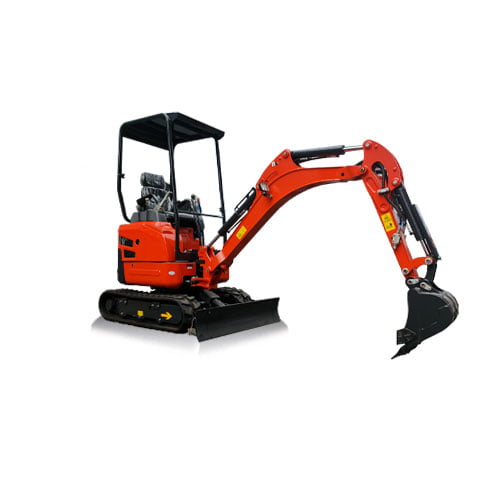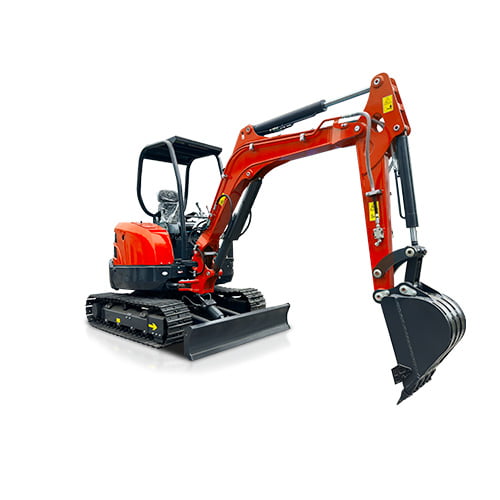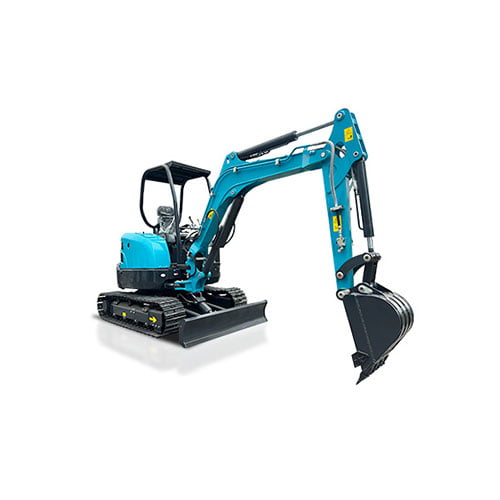Welcome to My Blog!
I’m thrilled to have you here! Before we dive into the content, I’d love for you to join me on my social media platforms. It’s where I share extra insights, engage with an amazing community, and keep you updated on the latest. Here’s how you can stay connected:
📘 Facebook: Connect with me on Facebook
🔗 LinkedIn: Follow me on LinkedIn
▶️ YouTube: Tractor Manufacturer Channel,Excavator Manufacturer Channel
🎥 TikTok: Tractor Manufacturer,Excavator Manufacturer
Now, let’s embark on this journey together! I hope you find the content here insightful, engaging, and, most importantly, valuable. Let’s explore, learn, and grow!
Table of Contents
Introduction
When tackling any construction or landscaping project, one of the first questions you might ask is how wide is an excavator? Width plays a crucial role in determining whether an excavator can access tight spaces, navigate work sites efficiently, and perform tasks safely. Surprisingly, many people underestimate the importance of accurate measurements, leading to costly errors. In this comprehensive guide, we will discuss how wide is an excavator, common mistakes to avoid when measuring, and everything you need to know to ensure the perfect match between your machine and your project needs.
Why Excavator Width Is Critical for Your Project Success
Before diving into measuring errors, it’s essential to understand why asking how wide is an excavator should be your starting point. An excavator that is too wide can get stuck, cause property damage, or delay project timelines. On the other hand, one that’s too narrow might lack the stability or lifting capacity you require.
Several factors impact the actual operating width of an excavator:
- Track type (steel or rubber tracks)
- Track expansion capability (some mini excavators have expandable undercarriages)
- Attachments (like buckets or hydraulic thumbs)
- Model and weight class
Therefore, understanding how wide is an excavator ensures that you avoid equipment mismatches, operational inefficiencies, and unforeseen expenses.
3 Common Mistakes When Measuring How Wide Is an Excavator


Accurately answering the question how wide is an excavator requires careful attention to detail. Unfortunately, many contractors and equipment operators make avoidable mistakes during the measuring process. These errors can lead to costly project delays, site access issues, or even the need for equipment replacement. Here, we’ll dive deeper into three of the most common mistakes people make and how to avoid them.
1. Ignoring the Track Expansion Features
Modern compact and mini excavators often come equipped with adjustable track widths. This design allows them to operate in confined spaces when tracks are retracted and to stabilize better during digging operations when tracks are expanded. However, not accounting for this variability can cause significant problems.
When you first ask how wide is an excavator, it’s tempting to look at only one measurement — usually either the retracted or the expanded width. But doing so risks misjudging whether the excavator can fit through gates, between buildings, or around other obstacles.
Example:
A 2-ton mini excavator might have a track width that retracts to 39 inches but expands to 51 inches. Planning based only on one dimension without understanding the full range can lead to tight squeezes or even project redesigns.
Key Tip:
Always measure the machine in both its fully retracted and fully expanded states. Document both numbers clearly. If the project site requires passage through narrow entry points, make sure to plan for the retracted width. Conversely, if stability during operation is a major concern, prioritize the expanded width.
Additional Advice:
Remember that retractable tracks need time and a flat surface to adjust. Not all models can adjust track width while in motion or when positioned on uneven ground.
2. Overlooking Attachment Widths
When asking how wide is an excavator, many people mistakenly focus solely on the base machine. Yet, attachments like buckets, augers, hydraulic thumbs, and grapples can dramatically affect the actual working width.
Why This Matters:
Even if an excavator’s base width fits through a tight space, a bucket that extends several inches wider can prevent it from passing through. This is particularly problematic in urban environments, landscaping projects, and interior demolition work.
Example:
A standard bucket for a mini excavator might add 6–12 inches to each side, depending on the model and type. Specialty buckets, like grading buckets, can be even wider.
Key Tip:
Always factor in the widest point of any attachment when determining how wide is an excavator. Measure the full width of the equipment with the attachment installed, and check whether the attachment moves (swings) beyond the track width during operation.
Additional Advice:
If you plan to swap attachments during a project, consider the widest one you’ll be using and base your clearance requirements on it. It’s better to overestimate space needs than risk unexpected blockages.
3. Measuring Only at Ground Level
Another major oversight when measuring how wide is an excavator is assuming that only the track width matters. While track measurements are important, they don’t tell the whole story. Many excavators have upper structures, such as cabs, counterweights, boom swings, or protective frames, that protrude beyond the track dimensions.
Consequences:
Ignoring the upper structure’s width can result in unexpected collisions with site boundaries, especially when rotating the cab during digging operations. On tight job sites, even a few extra inches can make a critical difference.
Example:
Some compact excavators, despite having narrow tracks, feature cab roofs or counterweights that extend 2–6 inches beyond the tracks. When operating in areas close to walls, fences, or buildings, this extension becomes a serious risk.
Key Tip:
Take multiple measurements:
- Measure track width at ground level.
- Measure the upper structure at its widest point (including counterweights and protective frames).
- Measure any operational swing clearances when the upper structure rotates.
By considering all dimensions, you can accurately plan access routes, working spaces, and safety margins.
Typical Excavator Widths: A Helpful Comparison Table
Now that you know common pitfalls, let’s look at a general table answering how wide is an excavator across different categories.
| Excavator Size Class | Average Width (Retracted) | Average Width (Expanded) | Typical Application |
|---|---|---|---|
| Micro (0.8 – 1.2 tons) | 28 inches (71 cm) | 35 inches (89 cm) | Indoor demolition, landscaping |
| Mini (1.5 – 3.0 tons) | 39 inches (99 cm) | 51 inches (130 cm) | Backyard projects, tight spaces |
| Small (5 – 8 tons) | 68 inches (173 cm) | 80 inches (203 cm) | Residential construction |
| Medium (10 – 20 tons) | 98 inches (249 cm) | 102 inches (259 cm) | Roadworks, mid-sized jobs |
| Large (22 tons +) | 118 inches (300 cm) | 126 inches (320 cm) | Major construction, mining |
This table should give you a clearer idea when trying to answer how wide is an excavator for your specific needs.
How to Properly Measure an Excavator‘s Width


Step 1: Position the Excavator on Level Ground
Set the excavator on flat, solid ground. This ensures that the tracks are stable and the machine isn’t leaning, which can affect the measurement.
Step 2: Retract or Expand the Tracks as Needed
If your excavator has expandable tracks, adjust them to the desired width before taking any measurements.
Step 3: Measure from the Outside of One Track to the Other
Use a metal measuring tape or a laser measuring tool. Place it flush against the outermost part of one track and extend it to the outermost part of the opposite track.
Step 4: Account for Attachments and Structures
Don’t forget to measure any protruding parts above the track level, such as the cab or counterweights, particularly if you’ll be working close to walls or tight structures.
By carefully following these steps, you can confidently answer how wide is an excavator in different operating scenarios.
How Wide Is an Excavator by Type?
Mini Excavators
Mini excavators are generally the most flexible when it comes to width. When you ask how wide is an excavator in this class, you’ll often find models that fit through garden gates or doorways, especially when tracks retract.
Standard Excavators
Standard or mid-size excavators tend to have fixed widths. Understanding how wide is an excavator at this level helps when planning for transportation, like choosing the right trailer or checking bridge clearances.
Large and Mining Excavators
When dealing with large models, how wide is an excavator becomes a significant question for logistics planning. These machines often require special permits for road travel and may need disassembly for transportation.
Practical Tips When Choosing an Excavator Based on Width
- Site Access: Always walk your work site with a tape measure before renting or buying.
- Transport Needs: Verify trailer and trucking capacities against how wide is an excavator you’re selecting.
- Local Regulations: Some urban areas have restrictions on machinery width for road and site access.
Planning ahead saves money, time, and frustration.
Conclusion
Knowing how wide is an excavator is more than just a simple measurement—it’s an essential piece of knowledge that affects every stage of your project, from planning and transport to operation and safety. Avoid common mistakes like ignoring attachments, forgetting track expansion, or measuring inaccurately at only one point. With a clear understanding of how wide is an excavator, you can select the right machine confidently, saving you valuable time, money, and hassle on any job site.
FAQ
How wide is an excavator bucket?
Bucket width varies widely depending on the excavator size and type of bucket, but common mini excavator buckets are 12–24 inches wide, while standard excavator buckets can be 36–72 inches wide.
How wide is an excavator trailer?
Typical trailers that carry excavators range from 8.5 to 10 feet wide. However, oversized loads require special permits in many regions.
Does adding a hydraulic thumb affect excavator width?
Generally, a hydraulic thumb doesn’t significantly affect width unless it protrudes past the sides of the bucket or machine body.
Can you adjust the width of all excavators?
No. Only specific mini or micro excavators offer retractable track systems to adjust their widths.
How much clearance should I allow when considering how wide is an excavator?
Always allow at least 6 inches of clearance on each side for safe maneuvering, especially through gates or doorways.




